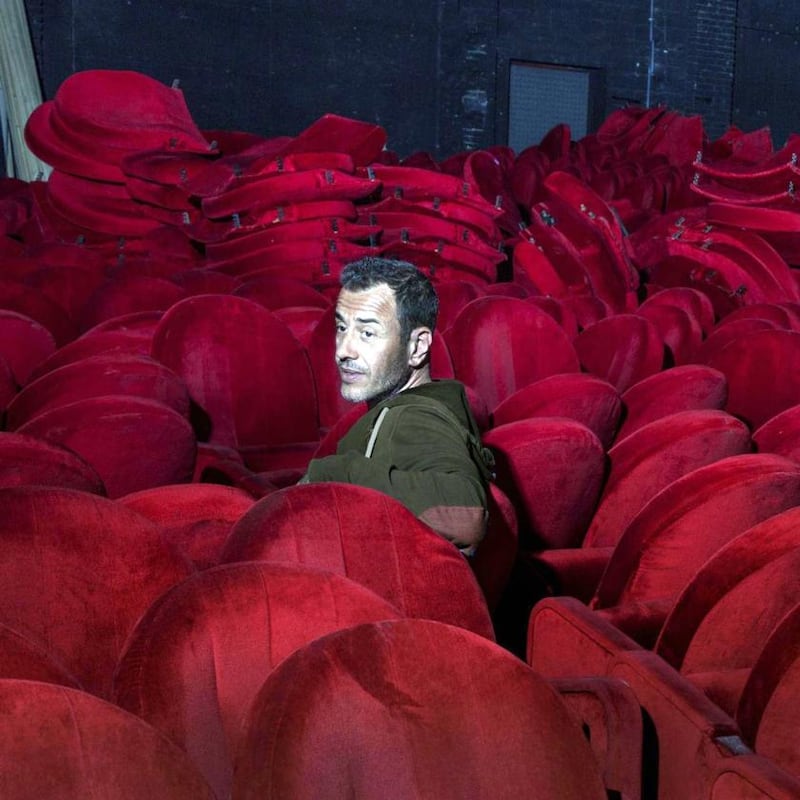Dogman, a prize-winner at Cannes and Italy's entry to next year's Oscars, is loosely inspired by the real-life case of Er Canaro (the Dog Keeper), a pet groomer and cocaine addict who, in 1988, murdered one of his criminal acquaintances at his pet salon in Rome.
The crime made headlines when the killer, Pietro De Negri, claimed to have subjected his victim, local gangster Giancarlo Ricci, to hours of gruesome torture, including castration. An autopsy found nothing of the sort: Ricci’s injuries were sustained after death and the mutilations described by De Negri simply didn’t exist.
The story might have made for gruelling viewing, but with Matteo Garrone (Gomorrah, Tale of Tales) at the helm, Dogman is unrecognisable from its unsettling source material.
The source of inspiration for a film doesn't matter. What is interesting to me is the conflict and obsession and the labyrinth of the soul of a human being
“I’m not interested in the original story,” says the director. “It’s just a starting point. I started on the script 12 years ago and have kept changing it over the years. We like to reinvent, with my other screenwriter, using our imagination. We start from a true story but then we like to change. My films come from a dark story between a family or a crime or sometimes 17th-century fairy stories. The source of inspiration doesn’t matter. What is interesting to me is the conflict and obsession and the labyrinth of the soul of a human being. Who knows what really happened here? It’s not important. But as a starting point, there was a visual aspect with the dogs. The dogs were the only audience for this cruel fight.”
Shot in Villaggio Coppola, an abandoned seaside town on the coast of Campania, Dogman concerns Marcello (Marcello Fonte), a cooing, kindly pet groomer and occasional low-level drug dealer who dotes on his daughter and his animal clients.
Cokehead thug
Unhappily, Marcello’s most frequent visitor is Simone (terrifyingly played by Edoardo Pesce), a cokehead thug who terrorises the rusty neighbourhood and bullies and cajoles Marcello into various petty – and not so petty – crimes. It takes a while, but like any wounded animal, eventually Marcello bites back.
Along the way, and in common with Gomorrah, Garrone's new film siphons all the glamour out of thug life. Martin Scorsese, a Garonne fan, has often professed an abhorrence of violence, an abhorrence that can sometimes be hard to detect while watching Goodfellas or Casino. With the tragic Marcello and his truck-sized tormentor, there's no hint of swagger.
“Film is a way of talking about human beings,” says Garrone. “It’s always an opportunity to reflect on a story. I focus on character. It’s more about psychological violence. I have no time for the violence made just to give pleasure.”
Human beings may be fascinating, but they aren’t, as the film-maker notes, as exciting as dogs. His canine ensemble were jointly (and deservedly) awarded the Palm Dog at Cannes. “I love to work with dogs,” he says. “Kids and dogs. They are unpredictable. And in every movie that’s what I look for. Something unpredictable. Kids and dogs give you a great opportunity to make something fresh and not mechanical. And if you also have a clever actor like Marcello [Fonte], he can follow their lead.”
Fonte’s standing
Dogman is the product of an extraordinary collaboration between Garrone and his leading man, Marcello Fonte, whose heart-breaking turn as the groomer earned him the award for best actor at Cannes and a newfound reputation as Italy's Buster Keaton.
Fonte, who hails from a poor farming community in Calabria and who, at 5ft 3in, is overshadowed by some of his more imposing canine co-stars, was the caretaker of a social centre when Garrone cast him. The distinctive-looking Fonte has won small roles before, including work as an extra on Martin Scorsese's Gangs of New York. (On the set, he had his picture taken with Leonardo Di Caprio: the photographer was Daniel Day-Lewis; Fonte failed to recognise him). Dogman is his first headlining role and something of a fluke.
“It was a really strange coincidence,” Garrone recalls. “Because we were looking for actors that have a quite strong-looking face. And we went to watch a theatre company of ex-prisoners. Marcello was the guardian of the place where this company was rehearsing. Days before, one of the prisoners went to the bathroom and died. So Marcello took the place of this actor for the play. And he was there on the day we came to see them. And I immediately found in Marcello the perfect actor for this story, because he was so tender and sweet and sensitive and very human. He was the best pest to interpret a character who is naive and who loses his innocence.”

Former hitman
This isn't the first time Garrone has turned to prisoners for casting purposes. In 2012, having watched a performance at Tuscany's Volterra Detention Centre, the film-maker cast Aniello Arena – a former hitman for the Nemolato clan of the Camorra – in the lead role of Reality, a dark, desperate comedy about a man who becomes obsessed with getting on a reality show.
Garrone had to obtain permission from a judge so that Arena, who was 20 years into a lifetime prison sentence without parole for a triple homicide, could leave prison during the day to star in a film that would win the Grand Prix at Cannes in 2013. Garrone had previously tried and failed to cast Arena in Gomorrah.
“My father was a theatre critic so I used to go with him to theatre a lot, and that theatre company of prisoners was one of my father’s favourite theatre groups,” says Garrone. “So I met Aniello there. Marcello was not a prisoner: he just happened to be with ex-prisoners.”
It's easy to read classic neorealist beats in the bombed-out apartments of Gomorrah and the rundown coastal town of Dogman. But long before the director's 2015 fairy-tale anthology, Tale of Tales, there was a strong surreal streak in the Garrone oeuvre. The 2002 noir The Embalmer is a sustained creep-out. A real-life crime and an extreme case of anorexia are transformed into a strange, fantastic horror in 2004's First Love. The final act of Dogman is a trippy nightmare against a gritty backdrop.
“Of course I come from Rossellini, from Pasolini, from Fellini,” says Garrone. “They are my fathers in an artistic way. The Italian cinema of the ’50s and ’60s was probably the best in the world. My way of telling stories comes from watching these movies. My identity comes from trying to have a connection with the great masters of the past, but at the same time trying to find my personal vision.”

Hollywood calling
Not long after Gomorrah was released as a "Martin Scorsese presents" project in the United States, Hollywood came calling with every crime script in town. Ten years later and the Rome-born director is still a studio holdout, although he did direct the English-language Tale of Tales.
“I don’t think I would be a good director for them,” he says. “My way of working is probably the opposite of the studio system. My approach is always open. I change the film during the work. I have nothing against the studio system. But I’m very proud that in my own country, I can keep my identity and do the stuff I want to do.”
Said stuff will soon include Pinocchio, the latest adaptation of Carlo Collodi's classic novel, starring Toni Servillo.
“It’ll be the true story of Pinocchio, the one that Collodi wrote,” says Garonne. “It sounds like a contradiction but I think the best way to make this surprising for the audience is by being faithful to the original. It’s different from what they think.”
Dogman opens on Friday, October 19th






















